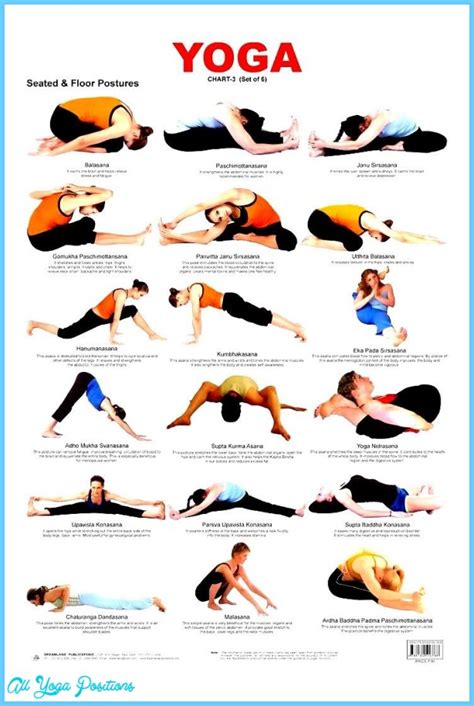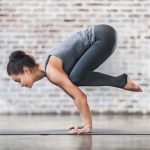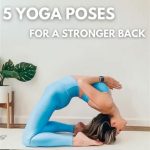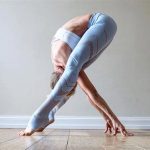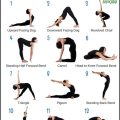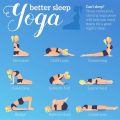Mastering Basic Yoga Floor Poses for Health and Wellbeing
Yoga has long been recognized for its benefits to physical health, mental clarity, and emotional balance. The foundation of any yoga practice begins with basic yoga floor poses, which are accessible to beginners while still offering depth and challenge for seasoned practitioners. These poses are essential for building flexibility, strength, and awareness. This comprehensive guide will walk you through key concepts, historical context, and practical applications of these poses, ensuring accessibility to both novices and experts alike.
Introduction
The practice of yoga is more than just a physical exercise—it’s a holistic discipline that enhances your body’s strength, flexibility, and mind-body connection. This guide focuses specifically on floor-based yoga postures, or asanas, that help to cultivate these aspects. Whether you’re just starting your yoga journey or looking to deepen your practice, understanding these foundational poses is crucial for achieving long-term progress. We’ll also discuss common misconceptions, provide clear examples, and give actionable tips for improving each pose.
Key Concepts
Basic floor yoga poses are often the first step in any yoga routine, providing an excellent introduction to alignment, breathwork, and focus. Below are the key concepts necessary for understanding and mastering these poses:
- Alignment: Proper alignment in each pose helps prevent injury and maximizes benefits.
- Breathing: In yoga, the breath (or pranayama) is essential for maintaining focus and easing into each pose.
- Mindfulness: Yoga encourages practitioners to be fully present in the moment, cultivating a deeper mind-body connection.
- Flexibility vs. Strength: Balancing flexibility and strength is key to avoiding injury and achieving long-term mobility.
Historical Context
Yoga’s origins trace back over 5,000 years, with its earliest roots in ancient India. Floor-based poses, or asanas, were initially developed as a means to prepare the body for long periods of meditation. In texts like the Hatha Yoga Pradipika, the importance of simple floor postures is emphasized for promoting balance and stability in both body and mind.
Over the centuries, different schools of yoga have developed, each with a unique emphasis on these foundational poses. For example, the Iyengar tradition focuses heavily on alignment and precision in floor poses, while Ashtanga integrates them into dynamic sequences. Today, basic floor poses are a common feature in most modern yoga practices, serving as both a warm-up and a tool for deepening flexibility.
Current State Analysis
As yoga has spread globally, these foundational poses remain the bedrock of nearly every style. However, the modern emphasis often shifts towards more advanced postures, leading many to underestimate the importance of mastering these basics. This section explores the current state of basic yoga floor poses in popular yoga styles, analyzing their role and application.
- Vinyasa Flow: While fast-paced and dynamic, Vinyasa relies on strong foundational poses to build transitions and sequences.
- Hatha Yoga: More focused on static holds, Hatha emphasizes long-term gains in flexibility through floor-based stretches.
- Restorative Yoga: In this meditative practice, poses like Child’s Pose or Supine Twist play an essential role in calming the nervous system.
Practical Applications
The following poses serve as the building blocks of a healthy yoga practice. Each pose has multiple variations, allowing both beginners and experienced yogis to tailor them to their level of comfort.
1. Child’s Pose (Balasana)
Often used as a resting pose, Child’s Pose gently stretches the hips, thighs, and ankles. It calms the brain and helps relieve stress and fatigue. This pose is excellent for grounding and reflection.
2. Cat-Cow Stretch (Marjaryasana-Bitilasana)
This flowing movement stretches the spine and improves mobility in the back. The synchronized movement with the breath enhances awareness and opens up the chest and lungs.
3. Cobra Pose (Bhujangasana)
A gentle backbend that opens the heart and strengthens the spine. Cobra Pose also stretches the chest, shoulders, and abdomen, promoting improved posture.
4. Bridge Pose (Setu Bandhasana)
This pose strengthens the back, glutes, and hamstrings while stretching the chest and spine. Bridge Pose also stimulates the thyroid and can help reduce symptoms of mild depression.
5. Supine Twist (Supta Matsyendrasana)
A relaxing spinal twist that releases tension in the back and shoulders while improving digestion. Twists are excellent for detoxifying the body and promoting circulation.
Case Studies
Consider the following case studies to better understand how basic yoga floor poses have transformed lives:
| Case | Yoga Pose Involved | Outcome |
|---|---|---|
| Chronic back pain relief | Bridge Pose, Cat-Cow | Significant reduction in pain after 12 weeks of regular practice |
| Anxiety and stress reduction | Child’s Pose, Supine Twist | Marked improvement in mental clarity and reduced anxiety levels |
| Improved posture | Cobra Pose, Bridge Pose | Enhanced core strength and posture after consistent practice |
Stakeholder Analysis
Understanding the benefits of basic yoga floor poses from various stakeholder perspectives:
- Beginners: These poses offer an accessible entry point for those new to yoga, with minimal risk of injury.
- Experienced Yogis: Revisiting basic poses allows deeper refinement of alignment and technique.
- Yoga Instructors: Foundation poses are a crucial part of creating inclusive classes that accommodate all skill levels.
- Healthcare Providers: Floor poses are commonly recommended in physical therapy and mental health programs.
Implementation Guidelines
For those looking to incorporate these basic yoga floor poses into their daily routine, follow these guidelines:
- Consistency: Practice 15-20 minutes a day, focusing on alignment and breathwork.
- Adaptation: Use props like yoga blocks or straps to adjust the pose to your current abilities.
- Mindfulness: Focus on the sensations in your body and let go of judgments about performance.
- Rest: Take restorative breaks in Child’s Pose or Savasana to prevent overexertion.
Ethical Considerations
As yoga becomes increasingly commercialized, it’s essential to consider the ethical implications of accessibility and inclusivity. Ensuring that everyone, regardless of ability or background, has access to yoga is a cornerstone of its philosophy. Practitioners should also be aware of cultural appropriation issues, making sure they honor yoga’s roots while teaching and practicing.
Limitations and Future Research
While basic yoga floor poses are beneficial for most people, there are limitations to their use. People with severe injuries, chronic conditions, or those in the late stages of pregnancy should consult a healthcare professional before beginning any new yoga practice.
Future research should explore the impact of yoga on diverse populations, particularly focusing on the elderly, children, and individuals with disabilities. Additionally, the psychological benefits of basic yoga poses in clinical settings, such as therapy for PTSD or depression, could benefit from further study.
Expert Commentary
Leading yoga experts agree that mastering basic floor poses is fundamental to both beginner and advanced practices. These poses cultivate mindfulness, foster body awareness, and provide an entry point into more complex asanas. While some may overlook the simplicity of these postures, their depth lies in subtle refinements and inner focus. Practitioners are encouraged to continually revisit these poses, as they form the backbone of a balanced, lifelong yoga practice.
